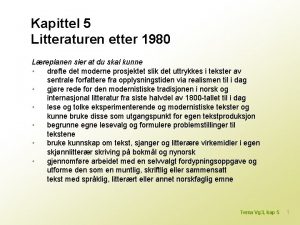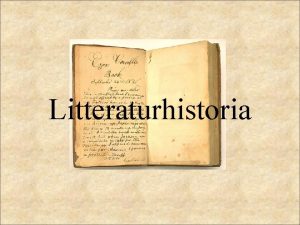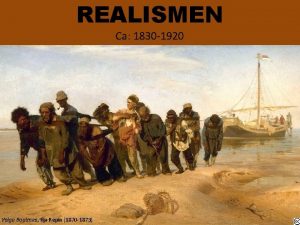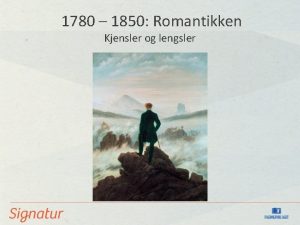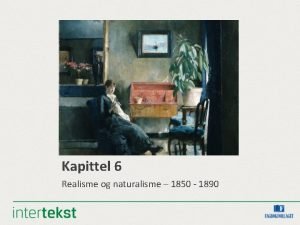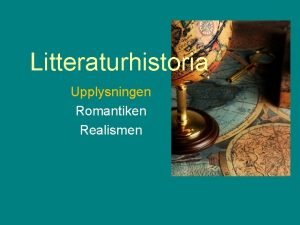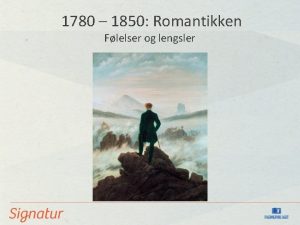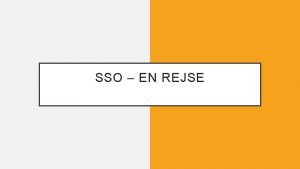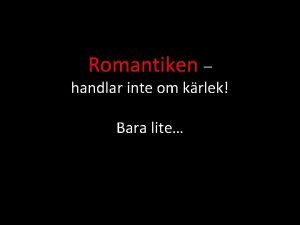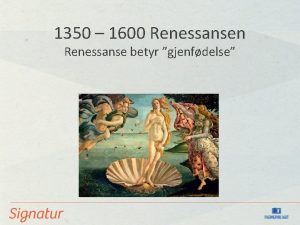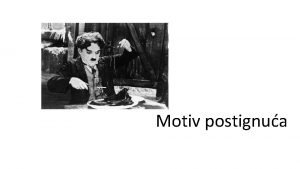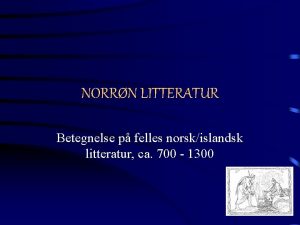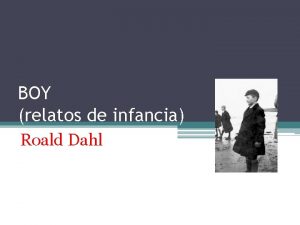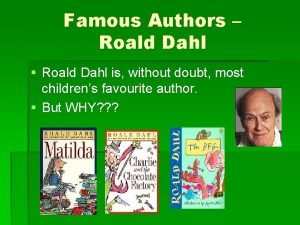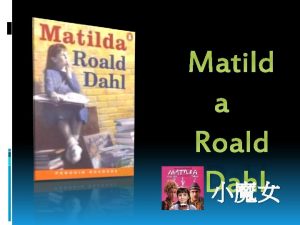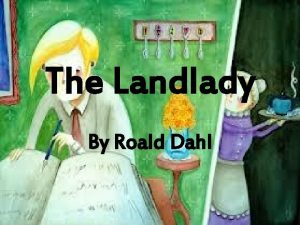Litteraturhistorie og motivhistorie Christian Dahl KU Motiv Litteratur










- Slides: 10

Litteraturhistorie og motivhistorie Christian Dahl, KU

Motiv: Litteratur: introduktion til teori og analyse: intet opslag Johns Hopkins Guide to Literary Theory and Criticism: intet Penguin Dictionary of Literary Terms and Literary Theory: motif: One of the dominant ideas in a work of literature; a part of the main theme. It may consist of a character, a recurrent image or a verbal pattern. See CARPE DIEM; LEITMOTIF; UBI SUNT. Oxford Dictionary of literary terms: motif: A situation, incident, idea, image, or character-type that is found in many different literary works, folktales, or myths; or any element of a work that is elaborated into a more general theme. The fever that purges away a character’s false identity is a recurrent motif in Victorian fiction; and in European lyric poetry the ubi sunt motif and the carpe diem motif are commonly found. Where an image, incident, or other element is repeated significantly within a single work, it is more commonly referred to as a leitmotif. See also archetype, stock character, topos.

Motiv – begrebshistorisk rids Etymologisk: bevæggrund (lat. movere) Diderots Encyclopédie (1762): ”Motif, (Musique. Les Italiens appelents motivo la pricipale pensée d’un air, celle qui constitue le caractére de son chant & de sa déclamation” Goethe (1787): ”Gegenstand, Sojetto, Motif” – kunstkritik Goethe til Schiller (1797): ”Eine Hauptsache des epischen Gedichts ist, daß es immer vor und zurückgeht, daher sind alle retardierenden Motive episch. ” – litteraturkritik Goethe, Maximen und Reflexionen (1833): Was man Motive nennt, sind, also eigentlich, Phänomene des Menschengeistes, die sich wiederholt haben und wiederholen werden und die der Dichter nur als historische Nachweis’t Friedrich Theodor Vischer, Aesthetik oder Wissenschaft des Schönen (1858): ”ein etwas schwieriges Begriff” Arthur Christensen (1925): Thème et motif Aarseth & Kittang, Lyriske strukturer (1968): Motiv og tema

& nogle motiv-inventorier • Stith Thompson (1936): Motif-Index of Folk Literature • Elisabeth Frenzel (1961): Stoffe der Weltliteratur • Satorbase. org (1985 -)

Motivhistorie og topologi Ernst Robert Curtius: Europäische Literatur und lateinische Mittelalter (1948) Aby Warburg/Kulturwissenschftliche Bibliothek Warburg. Bilderatlas Mnemosyne (1927 -)

Warburg: Bilderatlas Mnemosyne

Warburg: Bilderatlas Mnemosyne

Curtius: fra retoriske topoi til litterære topoi Retorik: Topik (inventio). Topoi som bevisgrunde Topoi koinones, loci communes, lieux communs, commonplaces Poetik: topoi som traderede og udtryks- og tankeskemaer, idealitet, reminiscenser, patosformler Topologien som heuristik: kortlægning af den europæiske bevidsthed og identitet gennem konkrete kontinuiteter

Roland Barthe: Fragments d’un discours amoureux (1976) ”Denne brudte tales fragmenter kan man kalde figurer. Ordet skal ikke forstås i retorisk betydning, men snarere i gymnastisk eller koreografisk: kort sagt, i den græske betydning; er ikke ”skemaet”; det er i meget mere levende forstand kroppens gestus grebet i flugten og ikke betragtet i hvile; atletens, talerens, statuens krop, eller rettere det af den spændte kropdet er muligt at få til at stå stille. Således med den forelskede, der er i sine figurers vold: han tumler rundt i en lidt naragtig sport, han opbyder alle sine kræfter som atleten, han fraserer som taleren, han fanges og forstenes i en rolle som statue. Figuren er den forelskede i aktion. Figurerne aftegner sig alt efter om man i talens løb kan genkende noget man har læst, hørt, følt. Figuren har konturer (som et tegn) og er uforglemmelig (som et billede eller et eventyr). En figur opstår, hvis blot én kan sige: ”Nej, hvor er det sandt! Den sprogscene kender jeg godt. ” (Barthes, s. 7 -8)

Hans Ulrich Gumbrecht: In 1926: Living at the Edge of Time (1998 ) Arrays: Codes: Automobiles Action vs. Impotence Bars Authenticity vs. Artificility Boxing Center vs Periphery Bullfighting Immanence vs. Transcendence (etc)
